The larynx is a framework of articulating cartilages, ligaments and muscles. It protects the entry to the lower airway and acts as the organ of speech.
The larynx is in the midline, opposite the 4th to 6th cervical vertebrae and has a close relationship to the carotid artery and jugular vein.
The framework of the larynx consists of articulating cartilages:
The following three cartilages are paired:
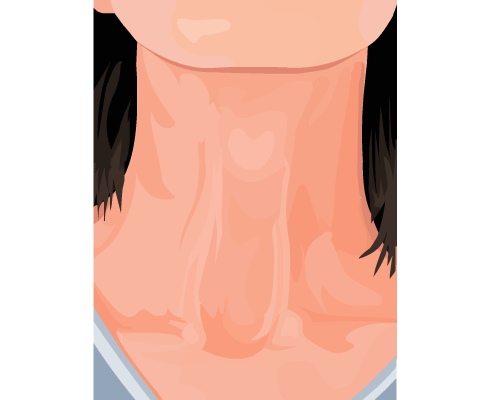
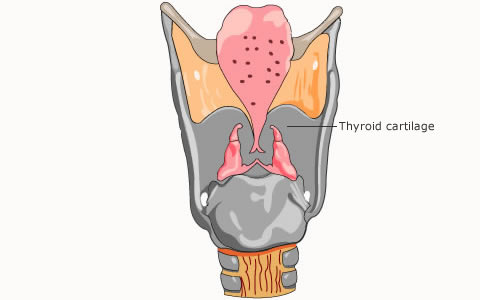
Thyroid
Two laminae meet in the midline inferiorly, to form the prominent 'Adam's apple' in males, with the thyroid notch above.
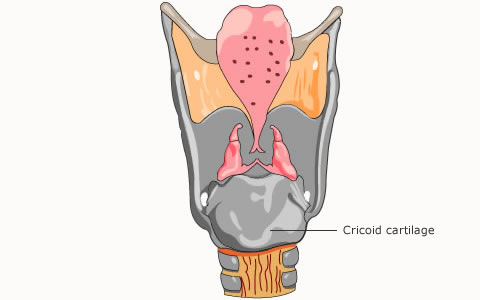
Cricoid
The cricoid cartilage is a complete ring in the shape of a signet ring and lies in front of the oesophagus. Pressure on the cricoid cartilage occludes the oesophagus and prevents aspiration from passive regurgitation in an anaesthetized patient.

Epiglottis
The epiglottis is a leaf-shaped cartilage attached to the superior aspect of the thyroid cartilage by the thyro-epiglottic ligament and extends upwards to overhang the opening of the larynx. The space anterior to the epiglottis where it meets the tongue base is called the vallecula.

Arytenoid
The arytenoid cartilages articulate with the superior aspect of the cricoid cartilage.
The intrinsic muscles of the larynx and the vocal ligaments are attached to the arytenoids, which pivot to adjust the position of the vocal cords.
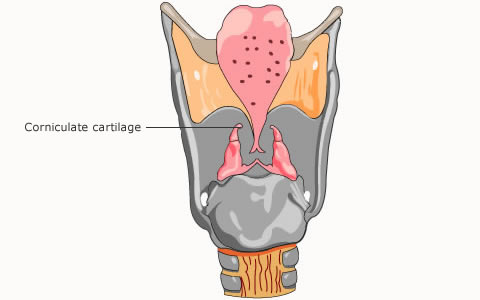
Corniculate
The corniculate cartilages are small nodules lying at the apex of the arytenoids.
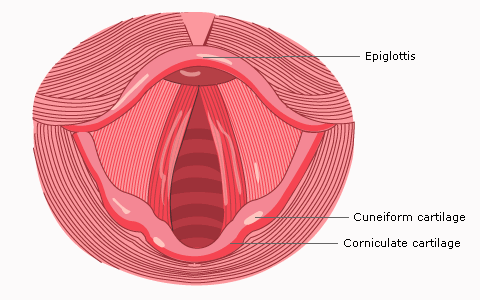
Cuneiform
These are small cartilages that are visible in the aryepiglottic fold at laryngoscopy.